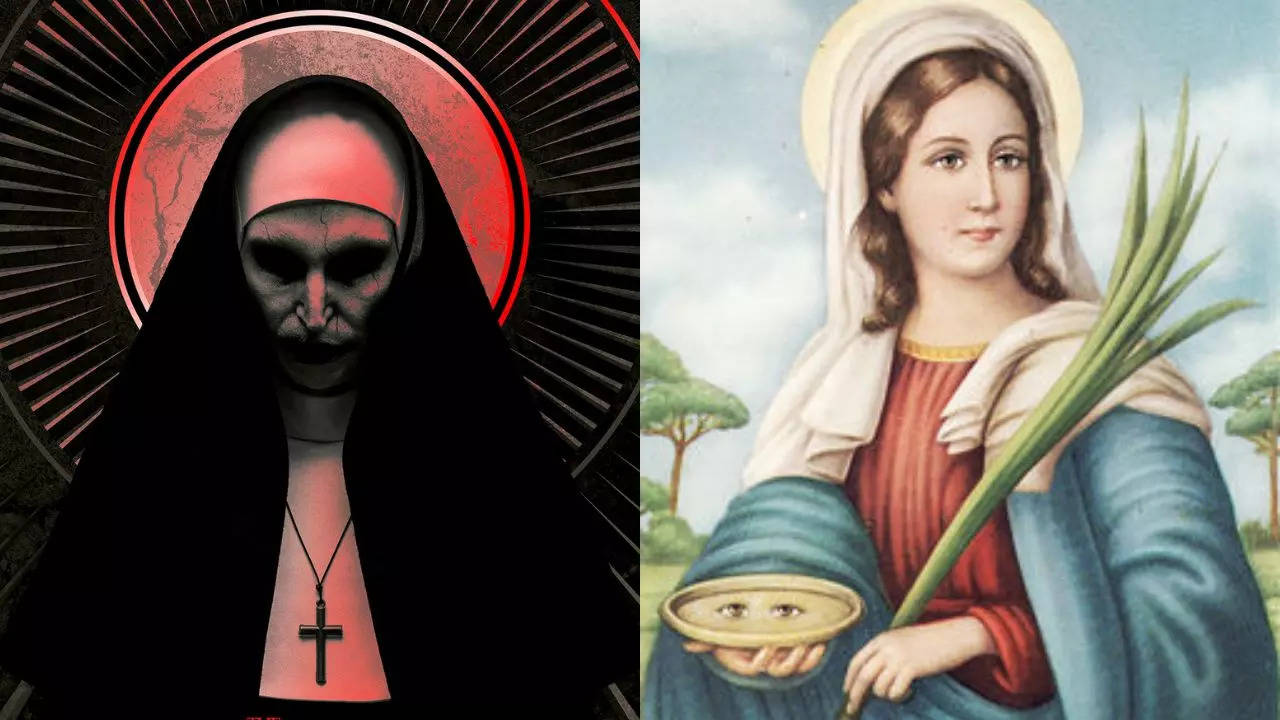The Nun II: Do You Know The Real History And Legend Of St Lucy?
The Nun II, a part of the Conjuring Cinematic Universe, refers to the demon Valak's quest for the eyes of St Lucy. While this may seem like pure fiction, St. Lucy (also known as St. Lucia) was indeed a figure in Catholic canon and orthodoxy. The film suggests that St. Lucy's eyes held immense power, and the demon Valak sought them relentlessly.

The Nun II: Do You Know The Real History And Legend Of St. Lucy?
The Conjuring franchise, known for its spine-chilling tales, has long captured audience imaginations by claiming that they were "based on a true story." This marketing tactic was particularly effective in the early films directed by James Wan, drawing inspiration from the case files of paranormal investigators Ed and Lorraine Warren.
Thin Threads of Reality

As the franchise expanded, introducing spinoff films like Annabelle Comes Home and The Nun, the assertion of being based on true stories began to wane, stretching the credibility of these claims. For instance, the premise of a doll summoning a werewolf or a demonic entity wreaking havoc in a convent seemed increasingly far-fetched.
St. Lucy: A Real Historical Figure
However, The Nun II took an unexpected turn by linking the entire Conjuring Cinematic Universe to the demon Valak's quest for the eyes of St. Lucy of Syracuse. While this may seem like pure fiction, St. Lucy (also known as St. Lucia) was indeed a figure in Catholic canon and orthodoxy.
The Enigmatic St. Lucy
St. Lucy's story, as portrayed in The Nun II, revolves around her martyrdom and the significance of her eyes. The film suggests that St. Lucy's eyes held immense power, and the demon Valak sought them relentlessly. In the movie, it is implied that characters like Sister Irene and even Lorraine Warren are descendants of St. Lucy, a notion that raises eyebrows, given that St. Lucy is revered in the Catholic Church as a virgin martyr, and historical accounts do not mention her having siblings.
Historical Controversy Surrounding St. Lucy
The historical figure of Lucia of Syracuse is shrouded in debate among scholars. Some argue that her story was either created or embellished by the early Catholic Church to promote Christianity during a time of persecution. The first written accounts of her life date back to the fifth century, approximately a hundred years after her death.
The True Story of St. Lucy
According to legend, Lucia was born in 283 A.D. in Syracuse, part of the Roman Empire. Her family was reportedly Christian. Lucia's unwavering faith led to her becoming one of the earliest non-clergy and non-military martyrs. The legend of St. Lucy revolves around her refusal to renounce her Christian faith. She rejected offerings to pagan gods and was condemned to burn a sacrifice in honor of Emperor Diocletian. She steadfastly refused, and various versions of her story claim she miraculously survived attempts to harm her, including being burned alive and even having her eyes gouged out. Ultimately, she was martyred by a soldier who stabbed her in the throat.
Eyes of St. Lucy
The supernatural element of St. Lucy's story, specifically her eyes, emerged much later in history, potentially as late as the 15th century. Accounts suggest that her eyes were gouged out during her persecution. However, various versions of the tale exist, some claiming she plucked out her own eyes to avoid looking at her pagan suitor, while others suggest they were gouged out as a vindictive punishment. These stories, like the ones depicted in The Nun II, may be more allegorical than historically accurate.
Despite the uncertainty surrounding the specifics of her story, St. Lucy's cult of worship arose in Sicily during the fourth century. Her relics, including purported remains of her body, were scattered across Europe. In some accounts, her eyes were said to have been miraculously restored upon the discovery of her remains.
Trending:
End of Article
Subscribe to our daily Entertainment Newsletter!
Related News





Amid Divorce Reports With Hardik Pandya, Natasa Stankovic Spotted With Disha Patani's Rumoured Beau. WATCH

Actor Karthi's Film With Nalan Kumarasamy Titled Vaa Vaathiyaar

700 Million Views! BLACKPINK Star Lisa's Solo Debut Track LALISA's Music Video BREAKS Record In First 24 Hours

Parineeti Chopra Pleads Paparazzi To Respect Their Privacy After Their Visit To Siddhivinayak Temple With Husband Raghav Chadha

Aangan's Samar Vermani Opens Up About Show Going Off-Air: 'Makers Haven't Told Us Yet' - Exclusive









